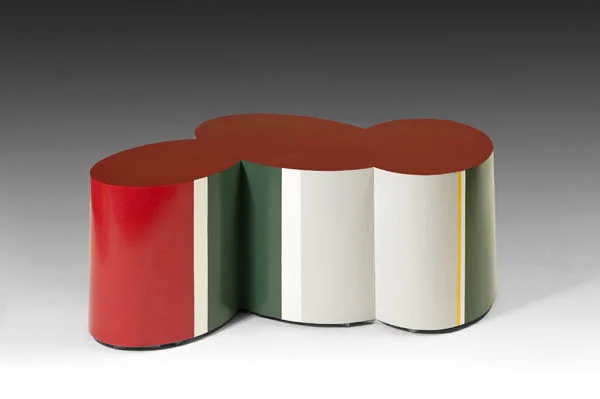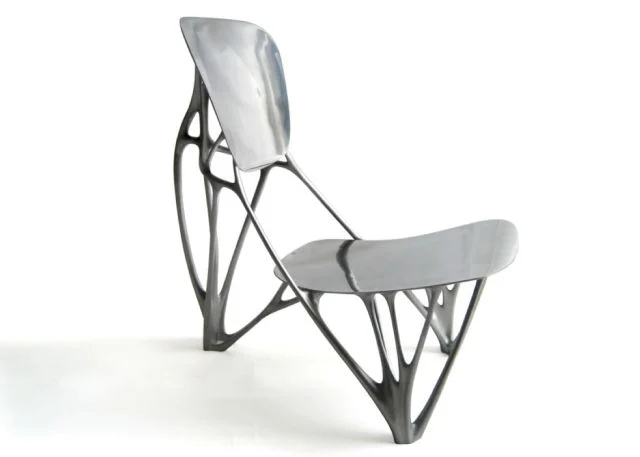Great vintage originals have always been in vogue and are very often replicated. However, it's one thing to find vintage furnishings that look so right for today but an altogether different experience to find those that look like a perfectly made contemporary design but are in fact vintage. It is pure bliss and exactly how I feel about the French artist, Guy de Rougemont (born 1935). A prolific painter, sculptor who also designs furniture till date and tapped by the influential French designer Henri Samuel back in the 1970s. Guy de Rougemont's iconic Cloud Table designed in the 70s and in different variations is shockingly au courant and hard to believe he designed it nearly four decades ago! His Table Nouage Rouge (Red Cloud Table) from 1970 seen above is a good example.
One look at his work on canvas, murals, totems and sculptures can tell you how he uses abstract art to interpret his view of the world in a rather baroque and colorful way. It is said that Guy de Rougemont has thought of cities as jungles and has tried to create, through his interventions, ways to penetrate and resonate with his surroundings. Not limiting his art (or his thinking) to canvases, his work extends to sculpture, furniture, objects, rugs, stained-glass windows (of course!), porcelain, ceramics, stamps, posters and more recently wine labels. And the fact that he continues to create art and objects that are not only very much his style but always relevant and avant garde at the same time is not an easy feat. Neither is being always one step (or several steps) ahead of his time. I for one find that the causal and casual effect of having a piece of art made functional and amidst other "regular" furnishings, a delightful and unique experience and one that I would love to see adopted in more interiors!
- xo, Raji
Guy de Rougemont 1992; Photography by Michel Baret
Inage via DianedePolignac.com
Images from Flickr & Pinterest

















